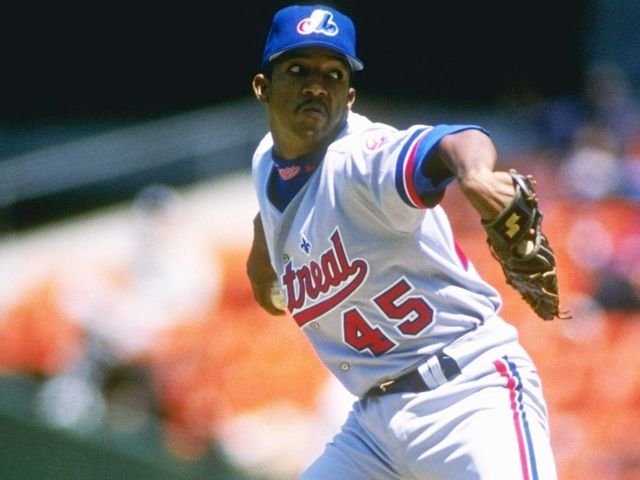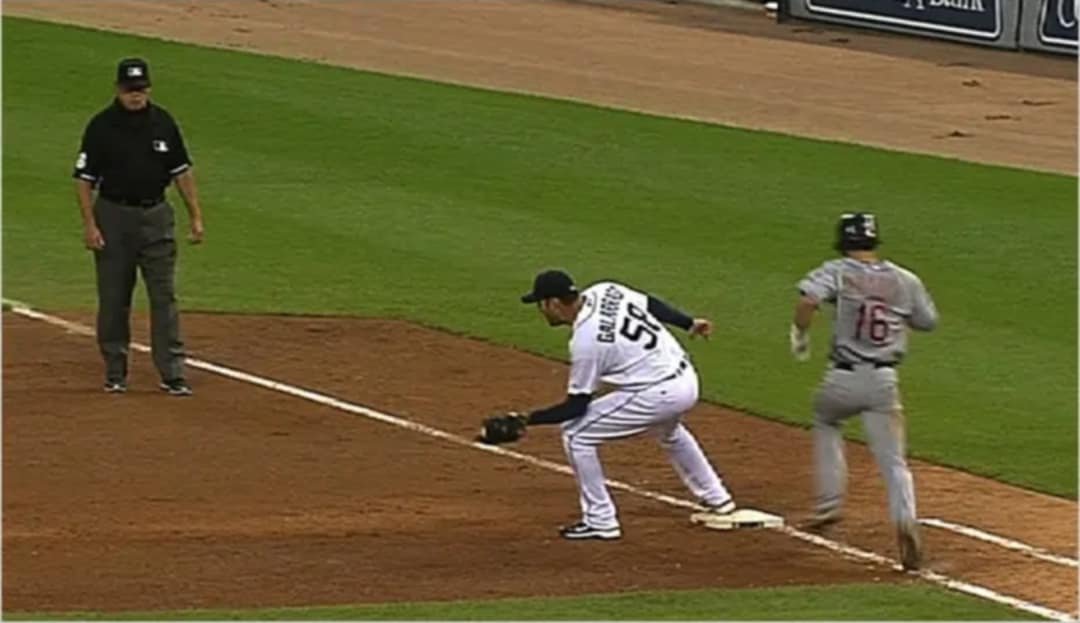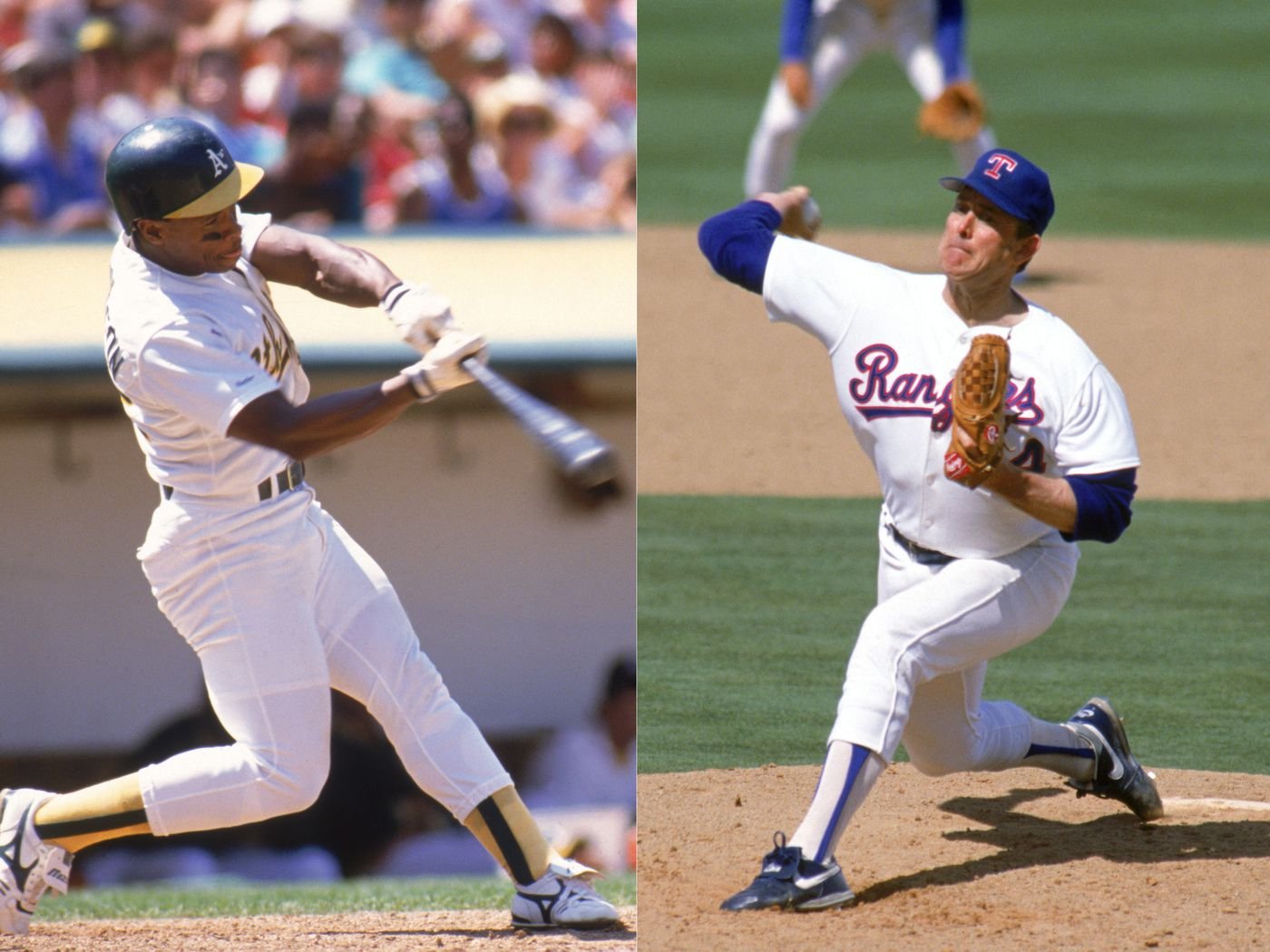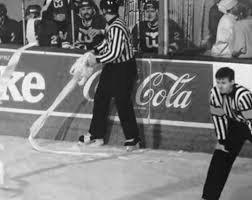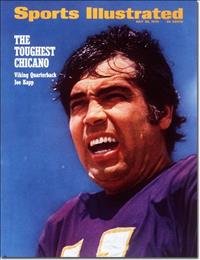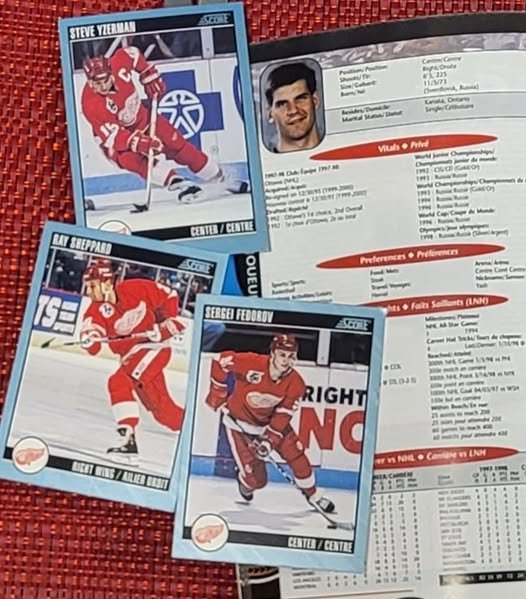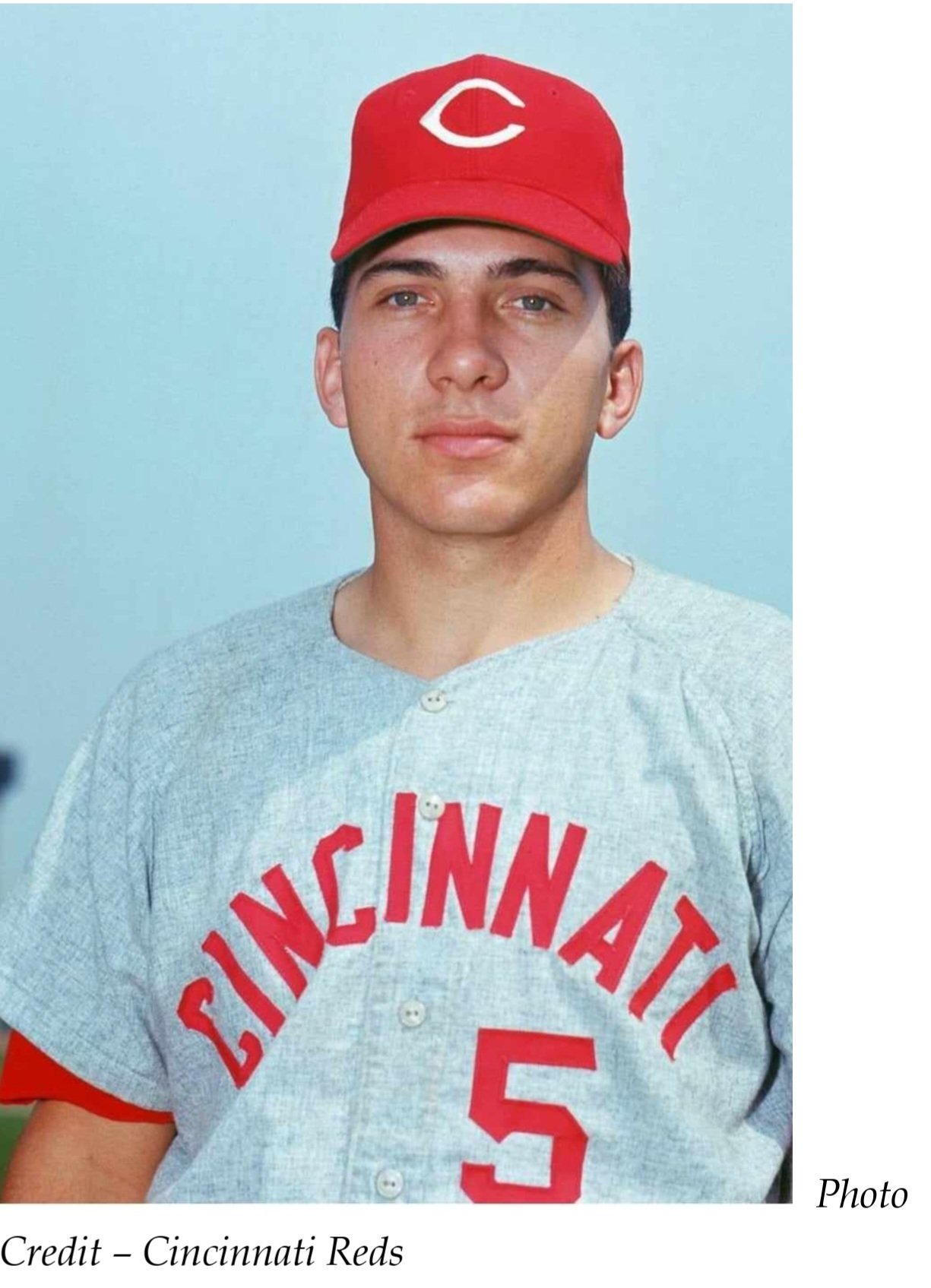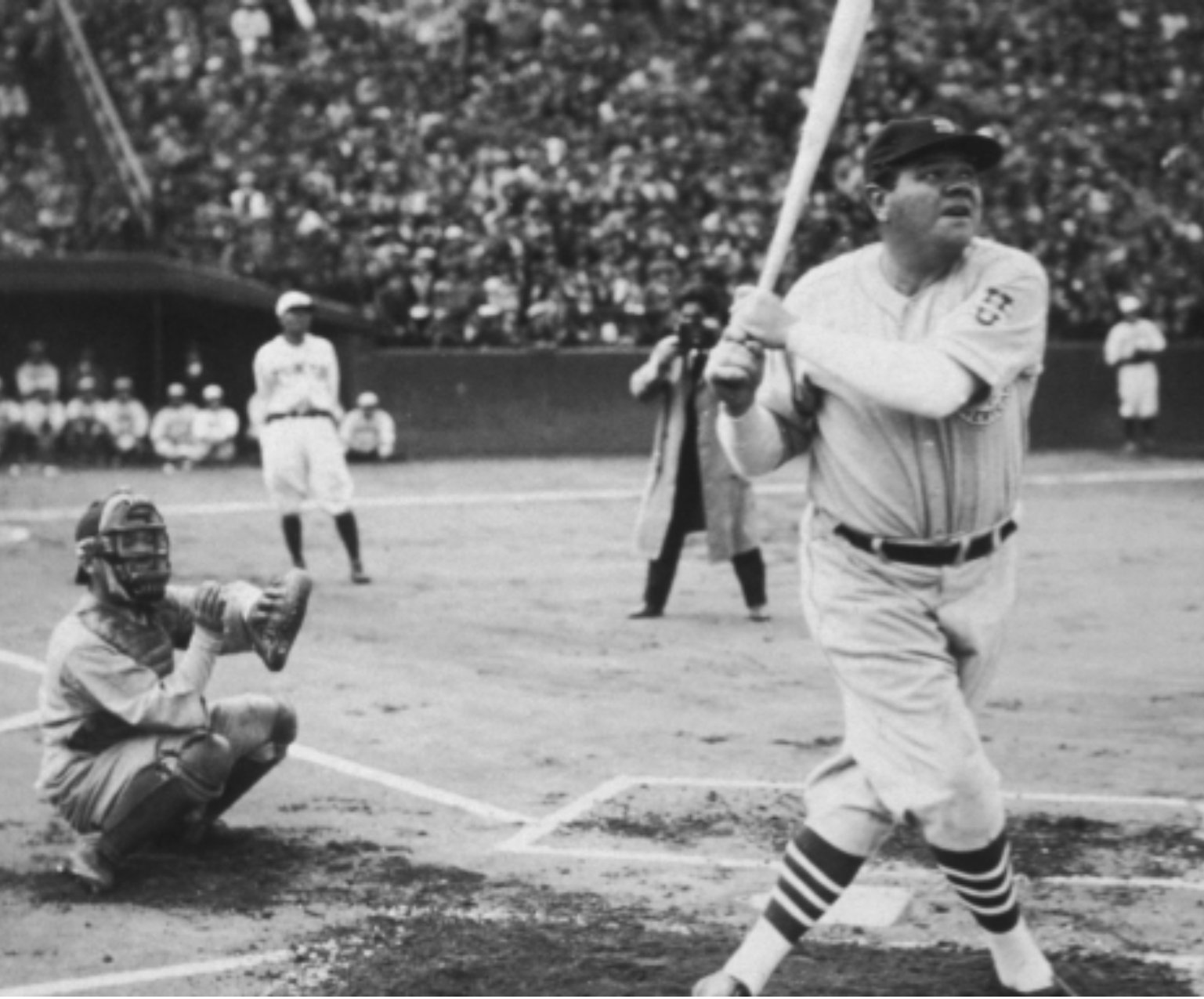Not too long after the champagne had begun to go flat after the 1975 World Series, talk began to bubble about what the Cincinnati Reds needed to do to their lineup to prepare for the now upcoming 1976 National League season. It seemed that the consensus from the fans was that the team needed a right-handed starting pitcher and a strong right-handed bat off the bench in a pinch.
No one was sure that this mirrored general manager Bob Howsam’s wish list but in the fan poll by the Cincinnati Enquirer, the people in the seats felt that, to acquire said players, the Reds could offer up players like Clay Kirby, Jack Billingham, Clay Carroll, Darrel Chaney, Dan Driessen and/or Merv Rettenmund. There were even some who felt that Tony Perez could be dangled to attract a pitcher or a hitter.
Perez was termed by at least one fan as Cincinnati’s “only expendable superstar” and that “now’s the time to get something for him”. He was 33-years old at the time. There was a caveat there, however. One quote from a vocal fan said that the “Big Dog” should be traded “only for a top line pitcher”. And while most Reds’ fans wanted a guy like Minnesota’s Bert Blyleven, Howsam told the Enquirer, “I can put you at rest there. He’s not available.” But according to the paper, a source with the Twins said that he might be, in the right deal.
Howsam told the Enquirer, “I’m checking but not actively pursuing (any trades). If something comes up (that) I think will improve the club, I’ll do it no matter what the position. I think what the fans don’t realize is we have some good young pitchers coming up. Also, some of our pitchers on the staff will mature and some will have better years next year.”
Some of the deals that were explicitly expressed by fans in the poll were what you might expect from fans. Chaney, backup catcher Bill Plummer and Clay Carroll or Pedro Borbon for Blyleven. Driessen and Fred Norman to Montreal for pitcher Steve Rogers. Plummer, Chaney and Driessen for Atlanta’s Carl Morton and catcher Earl Williams.
Some fans suggested sending Borbon or Carroll and Norman or Kirby or Billingham to Houston for Larry Dierker and Cliff Johnson. There were evidently some folks who didn’t necessarily appreciate Pete Rose at third base. Someone put forward the idea of trading Clay Carroll and Rettenmund to Oakland for Sal Bando.
Someone else said that if he were to trade Perez, the team should deal Howsam. The GM laughed at such an idea of hypotheticals. “If you could get the players people think are available, you’d never lose a pennant and nobody else would win one.” But Howsam had to be aware that his saying that would only go so far. As we might say today, “Fans gonna fan”.
In the off-season of 1974-75, Perez’ name had often been mentioned in rumours in exchange for a third baseman. He was obviously not dealt and that was best for the Reds. Perez played well at first base in 1975 and, by moving Pete Rose from left field to third, they found that they had their man in-house all along. The rationale behind trading Perez was that Dan Driessen could play first. But in the games that he did play that position, he showed that he was no Tony Perez.
The Texas Rangers had Ferguson Jenkins available after the 1975 season and the Reds could have possibly had him in exchange for one of their eight regular starting players. But then the Rangers dealt him to Boston for a couple of players and cash. When Howsam asked the Twins about Blyleven, he was told that the price would be shortstop Davey Concepcion. Howsam said ‘no’ to that idea.
The winter meetings would begin on December 8. With so many general managers and other baseball people in one place, the notion of a possible trade could always become more of a reality. And sure enough, on December 10, news of talks between the Reds and Atlanta centred on trading Darrell Evans and an unnamed pitcher to Cincinnati for Tony Perez and Darrel Chaney.
The logic of the move focused on the fact that the Reds had a dearth of right-handed hitters and, as a result, faced a lot of right-handed starting pitchers. Having a lefty power hitter like Evans to go with Joe Morgan would force teams to throw more southpaws at guys like Bench, Foster and Concepcion and subsequently increase their opportunities for production.
The deal was never consummated, but it illustrated that the idea of dealing a player like Perez was not out of the question at this point in time. That’s not to say that they didn’t make any trades at all. A week after the meetings were completed, they sent reliever Clay Carroll to the Chicago White Sox for a minor league catcher and 28-year-old left-handed pitcher Rich Hinton.
In January, the Reds hit the caravan circuit. Near the end of the month, a group from the team was in Indianapolis to meet with the locals there. Rawly Eastwick, Will McEnaney, Doug Flynn and Jack Billingham made the trip. Eastwick and McEnaney had grown their hair out over the fall and winter. McEnaney grew a beard as well. Jim Ferguson, the team’s public relations man figured that the barber shops in Tampa would be thriving at the start of spring training given the looks of those two pitchers.
Joe Nuxhall, former Reds pitcher and now the play-by-play man, also pitched batting practice for the team on occasion. Nuxhall made mention of something Tony Perez said to him following the World Series. Perez hit the big home run in Game Seven of the World Series, and, after the fact, he described to Nuxhall how it looked coming out of Bill Lee’s hand. “It looked like your fastball.”
Pete Rose didn’t make the caravan trip. Jack Billingham told a reporter that Rose had been besieged over the winter with speaking engagements and was going pretty much non-stop. He disclosed that Rose was getting a minimum of $1,000 for each of his appearances.
Joe Morgan and Davey Concepcion didn’t make the trip either, but a story was told about one of their conversations. One day, the two teammates were discussing base stealing. Concepcion maintained that he stole bases with his legs. Morgan felt differently in that he stole bases with his mind by knowing tendencies and moves. Concepcion would have none of that. “Okay, Joe. I cut off your legs and then we see how many bases you steal.”
Heading into what would normally have been spring training, the feelings may have been jovial between all the individual players, but there was a lot of work to be done between the front office and a lot of the men on the Reds’ player list. Nineteen different players – almost half the entire 40-man roster – was unsigned as the team historically would have headed down to Florida.
Because of the new rulings regarding the reserve clause and potential free agency and the state of the collective bargaining agreement, training camps were closed, and no access was available. At the end of February, Commissioner Bowie Kuhn said he had the authority to open camps, and he said he would only do so if he felt that talks between the owners and players on a new agreement were progressing to a certain level.
“The owners in their statement have said the camps would be opened if they could see progress in the talks. In view of this statement, if I felt that the players’ association was making progress toward a solution, yet players were still being denied access to training, I would use my influence to get training started. I could say, ‘Let’s open the camps.’”
While Kuhn seemed somewhat optimistic, Marvin Miller was straightforwardly the opposite. After twenty-one negotiating sessions, progress had been slow. The owners felt their proposals had been “fair and equitable” while Miller termed each of their overtures as “a nothing proposal”.
It took until March 17 for Kuhn to finally stand up and declare the training camps open starting the next day. The two sides had not yet come to an agreement for the 1976 season, but the commissioner felt it important, especially after such an exciting postseason and World Series, for baseball to proceed without any kind of goodwill-depleting work stoppage. The season would begin on April 8, unhindered.
That said, a lot of work would still be required between Miller, the players and Kuhn and the owners before any kind of long-term accord could be struck.
The Reds’ players had been working out on their own at a field in Tampa. On March 18, most of the team headed over to Lopez Field to get on with the task of commencing spring training. All except Rawly Eastwick. He went to the West Tampa Park he’d been going to all along. When he got there, it was, of course, empty. “I wondered where everyone was. Then it dawned on me. They must be at Lopez Field.” Sure enough, they were.
There was concern that the tensions between the two sides would seep over to the fans, but there plenty of people at the training camp facility and they showed plenty of enthusiasm toward their championship team. As the players took the field for the first time in 1976, the hundreds of patrons in the seats cheered lustily. Of course, there’s always one exception.
“You’re a hot dog, Rose!” One fan who hadn’t grown to appreciate his perpetual energy was not at all complimentary. Rose brushed it off. “Hot dog…..I just went to third (a new position in 1975) and made him a world champion fan last year.”
Joe Nuxhall had been looking forward to throwing batting practice and had been prepping for it for about a month. His arm was ready to go and the first man to step in to bat was Johnny Bench. On Nuxhall’s first lob, Bench cranked a bomb over the wall. “Where have you been?” Bench shouted to the former Reds’ pitcher. Normalcy was falling back into place for the Reds and other teams around baseball.
Joe Morgan was standing at second. A bullet grounder came his way, and he missed it. Rose saw a chance to deliver a barb. “That’s what happens to guys like you who have too many banquets over the winter,” Rose hollered at his teammate. The irony was apparent to everyone, given that Rose had also indulged in a lot of meals on the speakers’ circuit over the winter.
What many had been waiting for had finally arrived. They were on the field hitting balls and fielding grounders. The back and forth between the players and other players and between players and other fans was back. When Pete Rose stepped into the cage to face Nuxhall, he didn’t look good. On a ground ball to short, a fan yelled “Double play.” Rose shot back, “Not if the runner slides like I do.”
When it was time for jumping jacks, the players’ enthusiasm visibly waned. Bench cracked, “Let’s take a strike vote!” Sparky Anderson laughed. “The boys are well tuned,” he said.
*
Baseball has long been referred to as America’s Pastime. In accordance with being the country’s ‘pastime’, there were certain traditions that were adhered to for decades and decades. One of them dictated that, given that the oldest professional baseball team in the nation resided in Cincinnati, the Reds would host one of the very first games in every new season. In 1976, the Houston Astros were at Riverfront Stadium to play the inaugural contest of the year.
The home side picked up where they left off in 1975, knocking off the visiting Astros 11-5. Gary Nolan pitched the opener for Cincinnati. J.R. Richard was his mound counterpart for Houston. Given the short spring training, managers and pitching coaches had to keep a keen eye on their starters, at least early in the season. Nolan pitched into the sixth and got the win while Richard was lifted for a pinch hitter after four innings.
There were some who expressed concern before the game that the short spring training might have a negative effect on everyone’s play. Sixteen runs, 26 hits, four errors (all of them by Houston), a requisite number of mental mistakes, starting pitchers not lasting past the sixth – all of these could contribute to that argument. But really, pitchers all require an adequate amount of time to stretch themselves out and get themselves ready for the rigours of a 162-game season.
No one on either team hit a ball out of the park in the opener. Tony Perez led all players with four runs driven in. For a day, at least, the Reds were sitting on top of the National League West. In fact, by the end of April, Cincinnati held a one-game lead over the Dodgers at the top of the table. It was the same at the end of May. By the end of June, it was a 4 ½ game lead and at the All-Star break that gap was stretched to six.
By mid-July, over in the National League East, the Philadelphia Phillies appeared to be making easy work of their division. They had amassed a ten-game lead over their closest opponents, the Pittsburgh Pirates. And Philly would be the host for the 1976 All-Star game. It was fitting that the showcase contest between the two leagues would be held there as part of the country’s bicentennial celebrations.
The managers of the National League and the American League were the men who guided their clubs to the World Series in 1975 – Sparky Anderson and Darrell Johnson. Fans in Cincinnati voted early and often and got five of their players into the starting lineup for the NL. Joe Morgan, Dave Concepcion, Pete Rose, Johnny Bench and George Foster were all selected by the fans as starters. Ken Griffey and Tony Perez were chosen by Anderson to be reserves in the game.
For the Nationals, their starting defense would be rounded out by the Phillies’ Greg Luzinski and the Mets’ Dave Kingman in the outfield and Steve Garvey of the Dodgers at first base. Mike Schmidt would be a reserve at third base. The starting pitcher for the senior circuit would be San Diego’s 16-game winner Randy Jones. It was expected that the 1975 NL Cy Young Award winner Tom Seaver would follow Jones.
As the season had gone along, there were some concerns that the midsummer classic would not take place, a victim of tensions in the war between the owners and players over free agency rights. The players were threatening to boycott the game but Marvin Miller, the head of the players’ union, convinced the players to agree to play by informing them that the All-Star Game puts a lot of money into the players’ pensions.
Johnny Bench was drafted by Cincinnati in 1965 and had been the Reds’ regular catcher beginning in 1968. The ups and downs on every pitch make the catching position very demanding physically. “Twelve and a half years catching is like playing 30 years anywhere else,” Bench told the Associated Press before the All-Star Game. In the previous year, he’d played some third base. “Five games in a row, I played at third base. It was like catching one game.”
He was 28 years old, but he felt like he was closer to retirement than he was to the start of his baseball life. But he was on schedule to play another 100 games behind the plate for a record-tying ninth consecutive season. There was a time when his team would depend on Bench for offense. But now, with the complete group of players and hitters in the Reds’ lineup, he could comfortably bat in the sixth spot and not be solely depended on to deliver the big hits and runs.
On this team now, he was like an on-field manager, a father and a mentor. “I try to direct the young kids in the right way,” he said. He could see the newer wave of player in the majors, and he wasn’t thrilled by them. “These kids are different now. They know they need the game, but they act like they don’t.” It wasn’t just the young guys that needed a guiding hand at times.
Over the winter, the Reds acquired veteran Bob Bailey from Montreal for pitcher Clay Kirby. One day, Bench approached Bailey in the club house. “Pull up your pants,” the Reds’ catcher told the veteran. “Look right, the way the Reds are supposed to look.” At this point in the season, the Reds were looking just fine, thank you very much. There was a feeling that they were very much getting this part of the season behind them so they could get back to the business of commanding over the National League.
Oh, and in case you were wondering, the Nationals dumped the Americans 7-1 in the All-Star Game. The Most Valuable Player in the contest was the same man who led the majors in runs batted in at this point in the season with 73, George Foster of the Reds. Foster drove in three runs in the game, two of them on a third-inning home run.
The Giants’ John Montefusco may have summed up this game in a sentence. “I didn’t have my good fastball, but I didn’t need it against the American League.”
The Reds had gone into the break leading their division with a half-dozen game lead over the Dodgers. A couple of weeks after that pause, July 31, they had extended the lead over their rivals to 9 ½ games. One might have excused the team if they decided to put it into cruise control. But they may have had a crimp thrown into their plans.
Don Gullett, one of their best starters was having some discomfort in his latest start against the Padres at the end of July. He didn’t throw a fastball in the outing. “All Don threw was off-speed and breaking pitches. So, you knew his left shoulder had to be bothering him,” Bench told reporters after the game. No decision was made right after the game but given the fact that he lasted just two innings and gave up four runs, you’d think that some rest might have been prescribed.
The month of August saw the Reds go 18-9. Their lead over the Dodgers dipped to just 8 ½ games. By the middle of the month, Gullett was on the shelf because of swelling between his left shoulder and neck. The team didn’t place him on the disabled list, but they weren’t going to let him throw at all either. Simply taking it easy was all that was on his menu.
On September 19, a Sunday, Cincinnati clinched at least a tie for the National League West after defeating the Giants 5-2. After that win, were the Reds really rooting for the Dodgers to win their next games? Pete Rose explained that weirdness this way. “We don’t want to come to the ballpark (on Tuesday night) having won it because San Francisco beat the Dodgers,” Rose said.
The way he and his teammates wanted to do it was to defeat the San Diego Padres at Riverfront Stadium in front of their home fans and give everyone a chance to savour the moment and party. The Dodgers played their part in that whole scenario by beating the Braves on Sunday as well. Both teams had the Monday off. On Tuesday night, while the Dodgers were at Candlestick Park facing the Giants, the Reds were having trouble getting on the board early on.
Pat Zachry was on the mound for Cincinnati. He gave up back-to-back singles to Bill Almon and Johnny Grubb to start the game against the Padres. They pushed a run across in that first inning and rode that 1-0 lead into the fourth inning. But Tom Griffin ran into some trouble after George Foster led off the fourth with a triple. Griffin was eventually chased, and the Padres came out of the fourth with a 1-1 tie.
The Reds strafed the San Diego bullpen for another eight runs over the next three innings and they eventually took this game by a 9-1 score. Over in San Francisco, the teams played a seesaw game with Los Angeles taking a 2-0 lead only to see the Giants tie it up. The Dodgers won it late but by that point, their 1976 postseason dreams were extinguished. The Reds-Padres game was finished about 90 minutes before Los Angeles’ season was.
Over in the NL East, the Phillies were losing for the 19th time in their last 25 games. They dropped a 1-0 decision to the Cubs. With the Pittsburgh Pirates also losing, Philadelphia held a four-game lead over the Bucs with about two weeks left in their respective regular seasons. At one time in August, the Phils’ lead over Pittsburgh was 15 ½ games. By Sunday, however, any reason for stress and anxiety in The City of Brotherly Love was doused.
At Jarry Park in Montreal, a double header was scheduled between the Expos and the visiting Phillies. These would be the last regular season baseball games played there. Over in St. Louis, the Pirates were trying to stay alive while facing the Cardinals. The home side knocked off the invaders from Pittsburgh 5-2 for the third time in the four-game series. In La Belle Province, The Phils slogged through a workmanlike 4-1 win and the race for the East was over. Players subsequently mobbed one another on the field and headed into the visitors’ club house for a little party.
Most of the starters stayed inside to whoop it up while the bench guys and some unlucky starters were out there taking the second game over the Expos by a 2-1 score. Manager Danny Ozark spoke to reporters when their day was done. “I never felt that this team would let up,” the veteran manager said. “I was confident we were going to win this thing.”
Ozark cautioned anyone who was overly confident though. “We’re only one third of the way there, but it’s a big step.” Not surprisingly, the Phillies’ manager liked his team. “I feel we’ve got the best club in baseball. I felt that way last season. I felt that way during last winter and I still feel the same way today. We’ve got a good bench and the guys worked hard together for the same goal. We won the title because of the good balance and the good players we have.”
For Cincinnati, the regular season would end on October 3 with Fan Appreciation Day at home before 47,313 at Riverfront. Going into the game, Ken Griffey was leading the batting race by four percentage points (.3375 to .3333) over Chicago’s Bill Madlock. Sparky Anderson elected to sit Griffey, thinking that his title was secure. But Madlock went four-for-four to raise his average to 3385. Anderson inserted Griffey into the game in the seventh, but he went 0-for 2 and his average fell to .336. It was Madlock’s second consecutive batting title.
Meanwhile, Tony Perez was on a quest of his own. For nine straight years, from 1967 to 1975, Perez had totalled 90 or more RBIs in every season. Coming into this game, he had 88. The Reds led 2-0 in the first inning and the game seemed to coast along that way until the fifth, when Pete Rose doubled to score Doug Flynn to make it 3-0. In the seventh, Rose singled, and Perez tripled him home for RBI number 89.
“When I hit triple in seventh for my 89th run batted in, I think to myself that I have my last chance,” Perez told Joe Minster of the Associated Press. But with the Reds leading going into the eighth, “The Big Dog” would only to be able to bat again in that inning as it was unlikely there would be a ninth for Cincinnati. “The Big Dog” would need his teammates to start a rally for him to get to the plate again.
They did just that. Mike Lum singled. Davey Concepcion did as well. Doug Flynn got a base knock too. When Bob Bailey came up as a pinch hitter, he added another single. Pete Rose was up next, and he drew a walk. There was nobody out with Ken Griffey up. He went down on strikes. Tony Perez was next.
“Suddenly, there I am, and I tell myself not to hit into a double play, just to hit a fly ball to get one run in. If I don’t do it, that’s okay too. Then I get lucky and hit one up the middle for a single and I have my 90 because my teammates go out and give me a chance to do it.” Someone asked him how much this streak meant to him. “It mean a lot. I can’t express how I feel about it. But I was thinking about Griffey’s chance to win the batting title while I wait my turn at the plate.”
Tony’s wife, Pituka, made it to the game on Sunday. She had been in hospital the day before and had arrived at the stadium late. But she saw Tony get the single to vault him over the 90-mark and she was thrilled for her man. “I was so happy to see the big hit.”
For some of Tony’s teammates, it had been a memorable day as well. Joe Morgan notched his 60th stolen base of the season. Pete Rose led the league in hits with 215, runs scored with 130 and doubles with 42. Don Gullett proved he was back in a big way from the shoulder and neck tightness the month before with five innings of outstanding relief and the possibility of getting a start in the League Championship Series in Philadelphia.
Despite all the positives though, Griffey’s loss of the batting title was the ghost hanging over the room. Anderson accepted all responsibility for it. When reporters asked him about it, he dove right in. “Get this straight. I called Griff in before the game because I wanted to relieve the pressure on him. And I told him I was taking him out of the lineup. It didn’t work out because Madlock went 4-for-4. It’s not the first mistake I’ve ever made, and it won’t be the last, but it was a heartbreaker for Kenny.”
Griffey was quiet with reporters. “Madlock won it. But I’d rather not talk about it.”
On October 3, 1976, the Phillies had a record of 101-61 and finished nine games ahead of the Pirates. The Reds record was 102-60 and they concluded their season ten games ahead of the Dodgers. The two teams would convene in Philadelphia on Saturday night, October 9 to begin their best-of-five National League Championship Series. Just looking at these records, it appeared we might see an entertaining and possibly back-and-forth set of games.
*
In every sport and in every season, there are these little moments of prescience that make themselves evident in a way that they stand out when the regular season is all over and there is time to contemplate what everything means. Back at the beginning of August, a reporter with the Associated Press did an interview with Sparky Anderson. Up to the end of June, the Reds and Phillies had faced each other eight times. Philadelphia held the advantage winning six and losing two.
In some circles, there was a supposition that the Reds had been 1975’s team and that the Phillies were the team of 1976. Anderson did not like that thesis and he did his best to say so. He was asked in that August sit-down what might happen if the two met in the league championship series in October. “They could beat us. In a playoff, anything can happen. But if they beat us, they’ll walk away with bandages on them.”
“If we win our division, the Phillies will see a different team than the one that lost all those games to them early. We didn’t exactly go after them with a vengeance, and the Phils were excited going against us.” Anderson explained that he wanted to keep the Reds’ lead over the Dodgers at about ten games with “only 43 left.” That way, he said, “it will be awful tough for L.A.”
Assuming the two teams were to meet in October, Anderson told the AP reporter that the games in April, May and June would mean nothing. He talked about his team’s comfortability with October baseball. “They (his team, the Reds) know what it’s all about. It isn’t the money for the guys who play. They make enough of that. It’s the prestige that goes with winning.”
“We’ve got guys who love those TV cameras.”
This would be the time for all of us to see if Sparky knew what he was talking about or not.
* * *
Howie’s new book MORE Crazy Days & Wild Nights, eleven new stories of outlandish and wild events that occurred in sports over the last fifty years,is available on Amazon. It’s the follow-up to his first book of 2023, Crazy Days & Wild Nights! If you love sports and sports history, you need these books!
You can hear Howie and his co-host Shawn Lavigne talk sports history on The Sports Lunatics Show, a podcast, on the FiredUp Network, thesportslunatics.com and on Apple Podcasts, Spotify, iHeart Radio, TuneIn Radio and Google Podcasts and on 212 different platforms. Check out The Sports Lunatics Show on YouTube too! Please like and subscribe so others can find us more easily after you.
You can now listen to The Sports Lunatics Show every Sunday at noon in Ottawa on CKDJ 107.9FM as well or at ckdj.net


